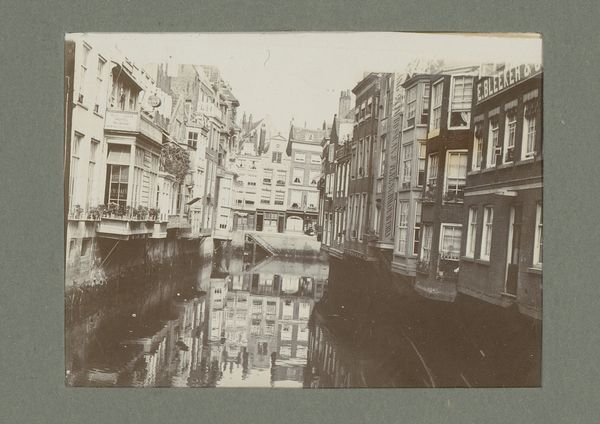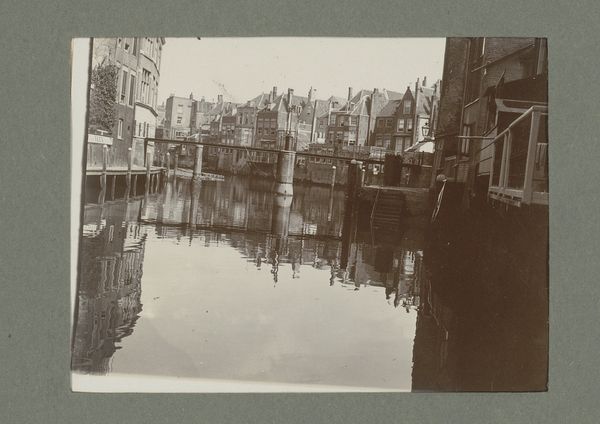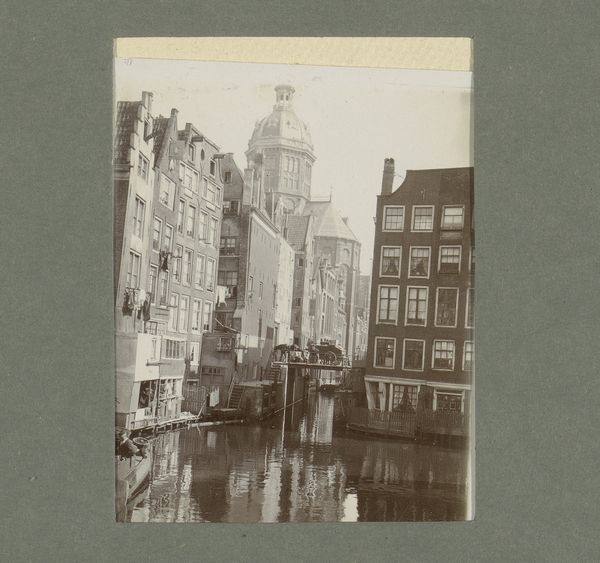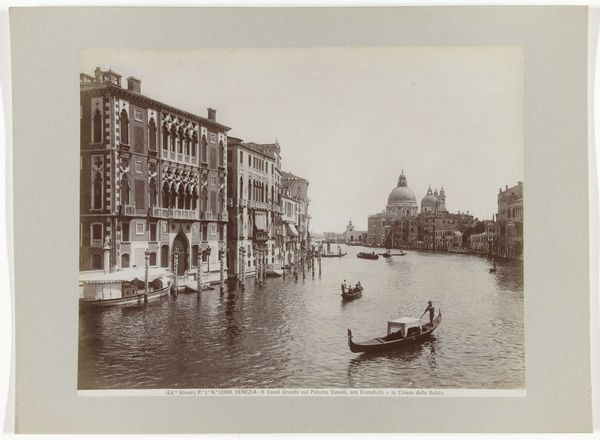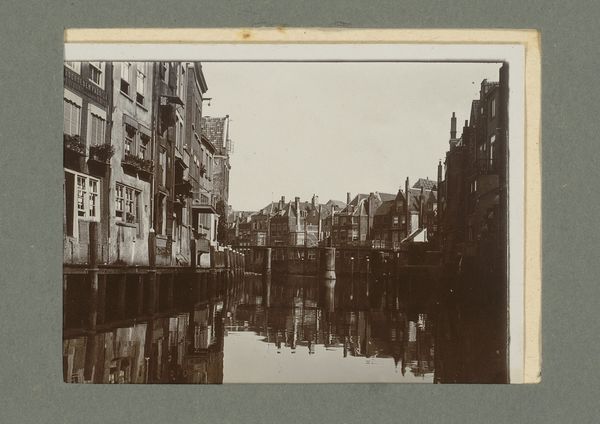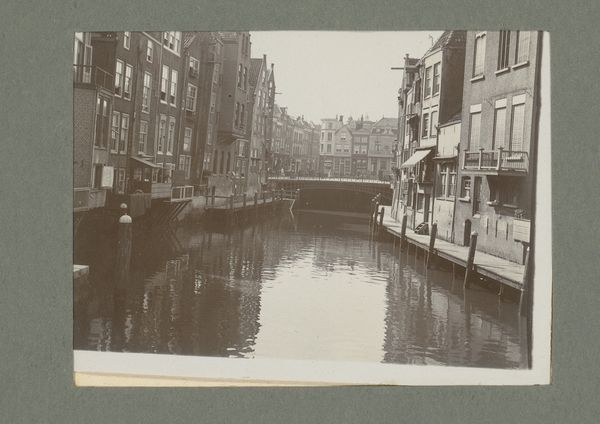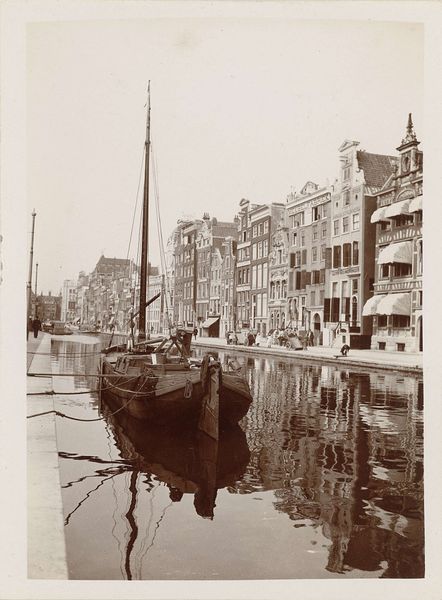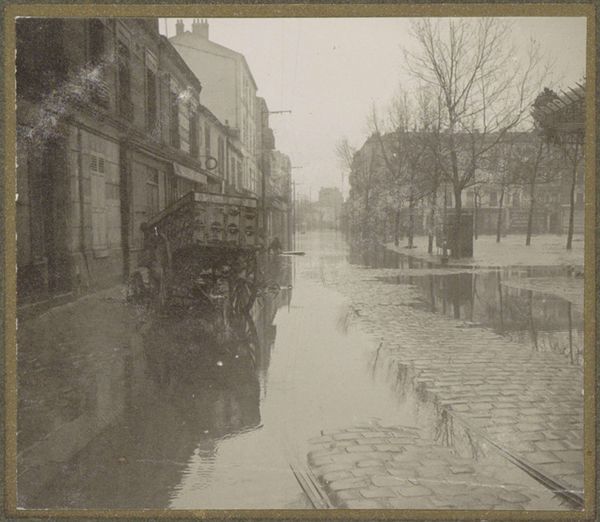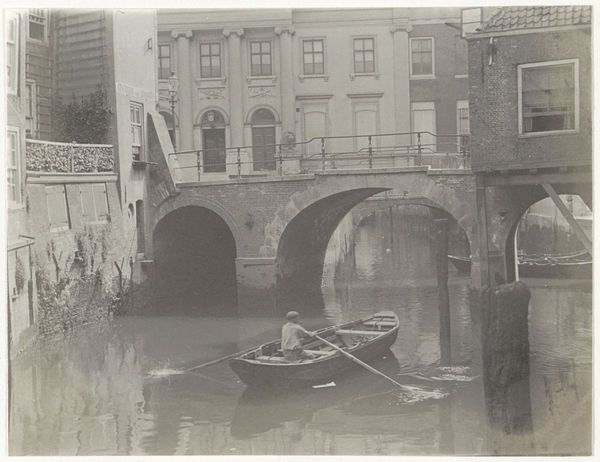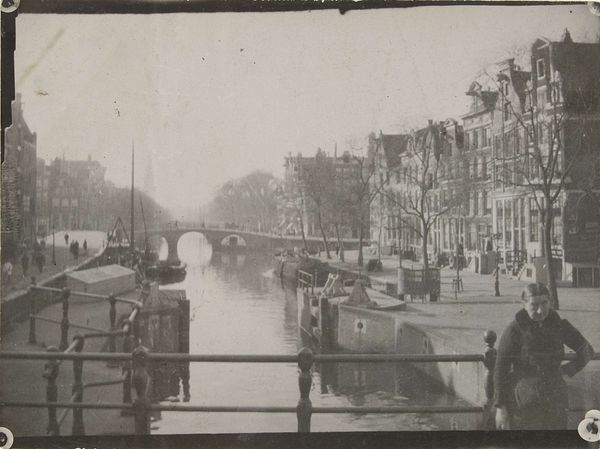
Gezicht op de Oudezijds Achterburgwal en de achterzijde van de Zeedijk in Amsterdam 1894 - 1898
0:00
0:00
georgehendrikbreitner
Rijksmuseum
Dimensions: height 297 mm, width 357 mm, height 367 mm, width 446 mm
Copyright: Rijks Museum: Open Domain
Editor: Breitner's photograph, "View of the Oudezijds Achterburgwal and the rear of the Zeedijk in Amsterdam," made between 1894 and 1898, presents such a somber view of Amsterdam. I’m struck by the reflections in the canal. What do you see when you look at it? Curator: This image resonates deeply. The reflections, you see, act as a symbolic echo chamber. Consider the buildings – they aren’t just structures, they are repositories of stories, lives lived. And those stories, partially obscured, distorted in the water, hint at the hidden currents beneath the surface of urban life. Notice the clothing hanging out to dry; those shapes signify so much. Editor: So the mundane becomes… monumental? Curator: Precisely. Look at how the light plays, almost obscuring details while simultaneously revealing a certain texture of daily life. The shadows aren’t merely dark; they feel weighty with memory, don't you think? Editor: Yes, it’s like the photograph holds more than what is immediately visible. It’s not just documenting; it’s suggesting narratives. Are there other symbols? Curator: The boat, for instance. Consider what boats often represent – journeys, transitions, a connection between different realms. Here, it’s moored, suggesting perhaps a pause, a moment of reflection within the bustling city. It also speaks of trade and work. Editor: I never considered that. Seeing this image has opened up how a simple photograph can be saturated with meaning. It shows us how much stories of culture and time are etched into an image. Curator: Exactly. Visual elements always speak—sometimes you just need to ask them the right questions! I too feel like I noticed new aspects of this photograph, discussing it with you.
Comments
No comments
Be the first to comment and join the conversation on the ultimate creative platform.
